Journal aim and scope: Journal of Fisheries, Livestock and Veterinary Science is a open access and scholarly peer review journal. It aims to provide high quality, comprehensive and broad coverage in all areas of fisheries, livestock and veterinary research. The journal publishes original scientific research articles, theoretical and practical papers, perspectives and reviews which provide functional, dependable and pragmatic insights and demonstrate significant advances to the fields. Furthermore, the journal provides quick initial decisions followed by a high quality editing service, faster and efficient publishing service including global indexing of articles for authors and readers. This scholarly journal encourages submission of multidisciplinary research communications and findings, and research communications that use complementary experimental and computational approaches to address the challenging fisheries and aquaculture sector, livestock and veterinary management and innovations on demand.
JFLVS journal provides an opportunity to share the information among the fisheries scientist, livestock manager, marine and coastal manager, veterinary doctors and animal husbandry practitioner. This scholarly open access journal is publishing most complete and reliable source of information on the discoveries and current developments and making them freely available through online without any restrictions or any other subscriptions to researchers worldwide.
Journal BiNET operate peer-reviewed and open access international journals on science and technology. We publish interdisciplinary journal articles on bioscience, agriculture, agronomy, forestry, fisheries, livestock, genetics, breeding, soil science, ecology, environment, medicine, business, management and society. We guarantee the satisfaction in manuscript processing and faster publication. Our mission and vision is to disseminate advances in science and technology worldwide though a faster model of publication, so that research works become available for scientific community. Submit your manuscript today, get your article published with us.
Features and benefits of publication with us:
Journal Profile:
Journal Description: International Journal of Forestry, Ecology & Environment is an open access and scholarly peer-reviewed online journal. It aims to provide high quality, comprehensive and broad coverage in areas of forestry, ecology and environment related issues that require scientific developments for sustainability. The journal publishes original scientific research articles, theoretical papers, perspectives and reviews which provide functional, dependable and pragmatic insights and demonstrate significant research in forestry and ecology in the changing environmentals worldwide. Furthermore, the journal provides quick initial decisions followed by a high quality editing service, faster and efficient publishing service including global indexing of articles for authors and readers. This scholarly journal encourages submission of integrated research perspectives and findings, and research communications that use complementary experimental and ecological approaches to address the challenging forest resource problems, future environment and sustainability on demands.
IJFEE journal provides an opportunity to share the information among the forest resource manager, environmentalist, ecologist and sustainability workers with integrated ecological and environmental approaches. World resources are endangered in many ways at different scales; restoration and conservation of resource is immensely important. Thus scientific articles and reports can be reproduced through our publications for wider community and environment protection. This scholarly open access journal is publishing articles of recent approaches and innovations with reliable source of information on the discoveries and current developments in broader aspects of ecology. Thus making peer-reviewed articles freely available through online without any restrictions or any other subscriptions to researchers and readers worldwide. Mangrove forest species ''Passur'' | Sundarbans, BangladeshThe floral species of Sundarbans forest are diversified and each characteristically unique. Species from Malvaceae and Euphorbiaceae family dominate Bangladesh's mangrove forest. More specifically, the flora of Sundarbans is distinguished by the abundance of sundari (Heritiera fomes), gewa (Excoecaria agallocha), goran (Ceriops decandra) and keora (Sonneratia apetala), all of which take place prominently throughout the region. While Passur (Xylocarpus mekongensis), from meliaceae family is also an important species with significant uses.
Characteristics of Passur (Xylocarpus mekongensis)
Importance and uses of Passur
Post prepared by: Md. Ahihul Islam, Specializations: Plantations, Forest and Climate Change Former official of Bangladesh Forest Research Institute. Dated: 12 November 2019. You can report any update or correction to this post from here.
Study abroad | International student admission and scholarshipHow to start study in abroad?It is a common query with students on how to go abroad to study and how to get a scholarship? How to receive offers of admission from international high-rank/good universities? What if I start my foreign study with self-finance, and then how can I get a waiver or funding opportunity from the university? How can I meet the English requirements of international university? Many such questions arise in the mind of students around the world. Often students seek help from other students who are currently studying abroad, send them some messages, emails, and even calls them on Facebook, Twitter, WhatsApp, Skype and use many other Social Media. This can be a good starting point but many of the information available online with relevant international universities. However, part of them wants to know how to go abroad to study; and believe the processing can be done through an education consultancy firm only. How much do you need to pay for an education consultancy firm? How much will the total cost etc. eventually? The following article on how to go through study opportunities abroad can be useful for the student community who are seeking studies at international levels at different capacities. From where to start an international study?First thing first, that is to say, if you intend to study abroad, it is just foolish to process or ask for information from an education consultancy firm or depends on others for information. This is because the questions you are asking can be answered on the internet in a proper way with certain relevancy. These days with the progress of online resources, every international university provides plenty of useful information through its website. Now the Internet is in the hands of every student. You have to spend some time everyday/weekly roaming around international university websites and browse relevant sections about admission, international students, study area, tuition fees, funding, and scholarships, etc. What information would you like to know on the Internet? Get started with a simple Google search query. Suppose you want to study in Australia or America or England or Sweden or Germany or Denmark or Belgium or Canada; whatever you choose your educational destination country. Find the relevant university through google search and then browse your intended university website for more information. To be more specific, it is your job is to search Google and collect information from the universities of these countries. All university websites worldwide have their admission information and, in most cases, can be applied online. Thereafter, the information you collect now is what qualifies you for admission to those universities or getting a scholarship. For most universities you will see separate sections, such as admission, international students, funding, etc. Where requested, English test score you may need such as IELTS, TOFEL or any other test that deemed suitable. That is, see carefully how much you need to score in the English Test to be eligible for study in your subject. English test requirements vary from science to business schools. Also, how much should you have the minimum CGPA and any particular subject requirements at a Bachelor's level such as Mathematics, Chemistry, etc? In addition, for some universities, you may find that they are seeking a higher test score in English. In many places, your eligibility may be the same but can differ from university to university. Again, there may be universities where the test may not be required for you because your Bachelor study medium was in English or you may earn your first secondary degree from an English speaking country. All you must do to know this information specifically by visiting the university's website regularly. Try to seek and collect as much information possible for your admission as well as scholarships. This way you will get time to devote to the whole process, depending on your qualification, you can apply to some university eventually. And if you find it difficult to find out necessary information, you can seek the help of an education consultancy firm (for example British Council, IDP Education) as convenient for you and importantly relevant for your goals of study abroad. It's easy to study abroad if there is willpower, academic eligibility and you can manage your sources of necessary funding. If you intend to study abroad, those who need information about studying abroad can read or keep this article. Please also share this article with other students at your university. Preparation for study abroad: Things you need to consider
The offer of admission and visa application: Looking forward to new life
For example, for most universities like in Australia, the offer of admission includes all the necessary information related to how to accept an offer of admission and how to pay university tuition fees. You will need Confirmation of Enrollment for student visa application in Australia. However, try to seek as much information possible in connection with the university's relevant authority before applying for your student visa in a country with a university. Although there are some differences between countries in the world of granting visas, almost all the rules are the same. Applying for a visa is not a problem at all as long as you are following guidelines appropriately and meeting documents requirements. On the university website, where you got the admission, you may also see a separate link, the migration board of that country. From there you will know how to apply for a visa. To be brief on it, suppose you received admission from a university in Europe. Now you have to apply for a visa or residence permit. In some cases, the educational institution provides the visa application forms. For example, the Wageningen University of Netherlands helps students deliberately for applying visa in connection with student home country Embassy of Netherlands. However, you can also contact Embassy/Consulate Section of that country in Bangladesh. They are sitting there to give you information regarding your visa application. Some student thinks facing the Embassy can be scary experience. But this is a completely wrong idea, they are sitting there to give you information or give you a visa so that you can start your studies at their institute. You just have to follow their rules and obligations, which varies country-to-country and even between institutes of a country. The visa application form should be collected from the specified embassy with the correct information and submit to the embassy along with all the necessary documents and the visa should be collected through interview on the specified day. Overseas study: Concluding remarks
Thank you for reading this article. If you have any questions, please contact us at [email protected].
Journal of Soil and Plant NutritionAsian Journal of Crop, Soil Science and Plant Nutrition aims to provide high quality, comprehensive and broad coverage articles in all areas of soil science, plant nutrition and farming research. The journal publishes original scientific research articles, method notes, perspectives and reviews which are intended to provide functional, dependable and pragmatic insights; and demonstrate significant advances to the fields. Furthermore, the journal provides quick initial decisions followed by a high quality review and editing service, faster and efficient publishing service including the global indexing of articles for authors and readers. This scholarly journal encourages submission of multidisciplinary research communications and findings, and research trials that use complementary experimental and computational approaches to address the challenging plant nutrition and crop cultivation questions and innovations on demand. AJCSP journal provides an opportunity to share the information among the soil scientist, agronomist and agricultural researchers. This scholarly open access journal aims at publishing most complete and reliable source of information on the discoveries and current developments; and making them freely available through online without any restrictions or any other subscriptions to researchers, authors and visitors worldwide. READ MORE Areas of publication:
Article submission:Authors can submit their original research paper, review paper and any other types of articles such as short communication for publication in this journal. Please follow the link below to submit article:
Scientific Journals | Article Publication
Journal BiNET publishes peer review and open access international journals on various aspects of science, technology and society. Explore our scholarly journals on biosciences, different fields of agriculture, agronomy, environment, bioinformatics, medicine, business, management and society. Authors can submit their manuscript for publication in our featured journals. We guarantee satisfaction in manuscript handling, processing and publication. Efficient article review, editorial and faster publication are the key features of Journal BiNET. Our mission and vision is to disseminate recent advances in science and technology worldwide though a rapid model of publication so that scientific works and reports become available for greater audience readership. Submit your manuscript today and get your high impact article published with us.
Journal BiNET is a community driven publishing platform since the year 2014. We publish scientific articles in online open access and peer review journals. The cost of maintenance of online journals is becoming higher day by day due to website maintenance, external archiving of journal articles with bodies such as CLOCKSS/LOCKS/PORTICO, digital object identifier (DOI) fees from CrossRef, fees related to technical personnel(s) who maintain website activities, plagiarism checking fees with external bodies such as Turnitine/iThenticate/Plagscan, article editing and text setup according to journal formats. All these expenses create burden to small publisher like us (Journal BiNET). In addition, each year we have to publish many article with full and partial waiver, because some authors are not able to pay open access publication fees to publish their article. We always strive to maintain higher quality with the article published in our platform.
Your contribution can help us to grow as a independent publisher and we can waive more and more authors with waiver for article publication fees. For this reason one of our dedicated executive editor initiated a fund raiser for Journal BiNET. Help us with the cause as little as you can, create greater readership and contribution of science through scientific article to the society.
Farmers in south Bangladesh adapted themselves during monsoon seasons through floating farming with traditional techniques. The land areas which are low to very low in land types, three months dry, rest 9 months water and water, this insisted them to practice floating farming for survival. These farmers live on water for their livelihoods. The farmers create floating bed with hyacinth for farming purpose, and as water come and increase, the beds also rise with water. These beds are very fertile in nature. Farmers grow huge rage of vegetables without chemicals. Farmers create balls of hyacinth materials and natural compost; and put seeds inside the balls. The seedlings grow very well, better than any fertilizers. Crops/vegetables grown in floating farming are vigorous and tasty. Wholesaler come to farmers through boat and buy their additional vegetables, thus farmers are making good money/profits from floating cultivation in Bangladesh. The farmers before went far away for job or employment, but now they practice floating farming and gaining profits during monsoon seasons. The community farmers trains each other how to make floating farm beds and continue farming in water logged areas of South Bangladesh.
Watch a video below about floating farming in Bangladesh (video courtesy: BBC News): Journal BiNET is recommended to authors of scientific articles. Publication of peer review and open access high impact manuscript has been increased with us until December 2018. Every years authors and visitors hits our website journalbinet.com to published their manuscripts. Scientific articles on recent advances in bioscience, agriculture, agronomy, technology, environment, business, management and medicine have been published in our platform. Many authors recommended us to publish articles with proper handling of manuscript, efficient review and editorial and open access faster publication of articles. In our platforms the following journals are active:
We always strive to meet the expectations of authors. We are planning and preparing to launch a set of more open access journals with several academic and multidisciplinary research fields. Our upcoming journals:
You are welcome to join with us as editor and reviewer. Make a request from the link below: Authors and user activity risen sharply with journal BiNET. See our visitor activity from below.
BE THE SOLUTION TO SOIL POLUTION Stop soil pollution to ensure safe food and health, it was the theme of world soil day 2018. Celebrated globally at research institutions, universities, government organizations, international organizations, civil society, farmers and non-government bodies. Nutritious and safe food is essential for healthy life. Healthy soils are also important for soil biodiversity, microorganisms and habitats.
Urgent action is necessary to avoid soil pollution worldwide. Soil pollution contains numerous threats in global food security and safety. At world soil day ceremony, FAO, in Rome, it was mentioned that 33 percent of all soils are degrading and this degradation continues at alarming rate globally. Human activities are the key sources of soil pollution, contaminants may enter in food chain. Buffering capacity of soils have been exceeded. Adoption of sustainable soil management practice become essential to ensure food security and safety. Read more #stopsoilpolution! #reuse #recycle #reduce Journal BiNET updated its publisher website. Authors and visitors can browse the journal website easily. Contents for authors, editors and reviewers are available in the website and can be also downloaded as PDF. Author guideline has been updated.
Follow easier online submission: https://www.journalbinet.com/article-submission-form.html Author guideline: www.journalbinet.com/uploads/2/1/0/0/21005390/author_guidelines_for_manuscript_preparation_journalbinet.com_v._1.4.pdf Writer: JAKIA SULTANA Experts and scientists (including extension workers) have advised that two-fifths of the arable land of Bangladesh have become deficient in organic materials and plant essential nutrients due to the pressures required to produce multiple crops from the same quantity of lands. According to the Soil Resource Development Institute (SRDI), about 43.4 lakh hectares of the country's arable lands presently do not have a normal (optimum) percentage of organic matter level in the top soils – and that means about 42 percent of the total arable area of the country. The SRDI director, Md Delowar Hossain Molla, said in the occasion of world soil day that "around three or five percent organic matter is deemed healthy for the soil in general, but at present there is no normal amount of organic matter (or less than 1/2 percent of organic matter) in around half of the country's arable lands." The overuse of chemical fertilizer in the agricultural sector is one of the main causes of organic matter depletion. The data of Bangladesh Bureau of Statistics shows that Bangladesh has increased its use of chemical fertilizers (e.g. Urea, phosphate, potash, gypsum, etc.) by 66% from 1999 to 2008, while public subsidies in agriculture sector increased by 340% over the same period. The cropping intensity has been increased about 300% since last few decades to meet the demand for foods. In relation to the excessive use of chemical fertilizers, the growing trend of simultaneous cultivation and the lack of sustainable crop rotations ultimately lead to excessive soil nutrient extraction. It seems like soils are becoming deficient in essential plant nutrients. In past couple of decades, rice cultivation successively substituted traditional rice cultivation practices and replaced leguminous and other crops in rotations. The cultivation of leguminous plants in rice-growing intervals, however, minimizes paddy plant's nitrogen consumption and improves soil fertility. But this practice is becoming rare in Bangladesh, therefore natural recovery of nutrient pools are absent in the agricultural system. However, nitrogen remains organically and inorganically in the soil, and more than 90% of the soil nitrogen is connected with organic matter but our soils are lacking organic materials. The former Director-General, the Department of Agricultural Extension, Hamidur Rahman, said "The soil health of Bangladesh has deteriorated dramatically in the last few decades and is in reverse with the objective of producing more crops (two, three or even four crops in a year) from the similar small amounts of per capita arable land area." In one piece of land every year, farmers now produce even more hybrid and modern crop varieties with conventional agro-chemical based farming, which deliver more yield and cash, while ultimately affecting soil health and land degradation. The need to use chemicals and multiple crops to meet the growing demand for foods has not been denied, however, farmers should be encouraged to use more organic fertilizer together with recommended chemicals to recover their soil's health. Soil test based fertilizer recommendation can be very helpful in this regard, but this requires extension activity and farmer supports to test their soil samples. Unless the soil fertility condition of our arable land will deteriorate further in the years to come. Future generations food security will become vulnerable to achieve. The SRDI documents also indicate that approximately 3.7 million hectares of soil are phosphate deprived, with 2,72 million hectares deprived of potassium, 3,31 million of hectares deprived of sulfur, 275,000 of zinc and 2,49 million of boron and 300,000 of calcium and magnesium deprived. The farmers should alternately cultivate various crops in their arable lands with recommended fertilizer because various plants remove various kinds of nutrients from the soils. The use of organic manures (e.g. cowdung, compost) and addition of crop residues are essential to maintain fertility and increase organic matter of arable lands in Bangladesh. Permalink of this article: https://www.journalbinet.com/publisher-blog/world-soil-day-2017 Author name: Jakia Sultana, Bangladesh. Last update: 05 December 2017. www.journalbinet.com
Guidelines for Authors
Before you start! Ethics in Publication Authors are requested to read, understand and agree about the ethical matters of journal publications. More information can be read from http://publicationethics.org/. Author Disclosure and Conflicts of Interest Authors have to add a section in article to declare funding sources (i.e., projects, university funds, ministry, research funds etc.) for the works of an article. Moreover, if there is any conflicts of interest about the research findings that might arise from interpretation of results should be declared by the authors in the article. Additionally, if author discover a significant error or inaccuracy in a published article, then it is responsibility of author to promptly notify the subject matter to editor and publisher and cooperate substantially to correct and or update an article. Conflict of Interest (COI) exist when there is a divergence between an individual’s private interests (competing interests) and his or her responsibilities to scientific and publishing activities such that a reasonable observer might wonder if the individual’s behavior or judgment was motivated by considerations of his or her competing interests. In case of Journal BiNET, COI exists when a participant in the publication process (author, peer reviewer or editor) has a competing interest that could unduly influence (or be reasonably seen to do so) his or her responsibilities in the publication process. Among those responsibilities are academic honesty, unbiased conduct and reporting of research and integrity of decisions or judgments. Publication process includes the submission of manuscripts, peer review, editorial decisions and communication between authors, reviewers and editors. Many kinds of competing interests are possible such as financial ties, academic commitments (i.e., strong belief may bias a research and its results!), personal relationships, political and religious belief and institutional affiliations. Journals often have policies for managing financial COI, mostly based on the untested assumption that financial ties have an especially powerful influence over publication decisions and may not be apparent unless they are made explicit. However, other competing interests can be just as damaging and just as hidden to most participants, and so must also be managed (text adapted from http://www.wame.org/). Authorship and Contribution All authors should have adequate contribution to the works or research in terms of conception and design, data collection, analysis and interpretation, drafting, intellectual standards, final approval, critical revision and key findings of a submitted manuscript; and listed and describe roles properly with affiliations and attributions. Authors are responsible for contents of an article, journal authority and or editorial board is not responsible for contents of a published article. Authors pay fees for online article publication within open access model. Human, Animal Rights and Clinical Trails All authors should seek proper approval against every works or actions or clinical trials from concern/suitable/ethical/medical/govt./university/research station authority for conducting experiments/trials with animals and human subjects. This approval should be mentioned in the methodology section of an article and that consent was obtained for experimentation as and where necessary from relevant authority. Submission Declaration and Cover Letter Duplicate and multiple submissions are prohibited. If authors submit a manuscript whose basis is any of his previously published works, require to mention and cite it properly with the submitted manuscript. Submission of same article to more than one journal is unethical and unacceptable. Similarly, submission of similar type of works with identical text and parameters should be highly avoidable by authors. Manuscripts that have been published (and or under processing and review) in English or other language elsewhere cannot be submitted for publication except in the form of an abstract or as part of academic thesis or academic lectures. A Cover Letter should be included with each submission to declare originality, authorship, type of article, background information and corresponding author details. Originality, Plagiarism and Academic Misconducts Journal BiNET is committed to publish articles which are based on original materials. A manuscript or some part(s) of it neither submitted/published elsewhere nor is under review/processing for publication elsewhere, may considered as an invalid or incomplete manuscript. On the other hand, manuscripts which are found to be plagiarized from other sources will be rejected for processing and publication and may be subjected to rectify by CrossCheck or PlagScan. Similarity Index is created and communicated with authors during publication. Plagiarism and or copy-paste are strictly prohibited. Furthermore, any fabrication and falsification of article content is prohibited which extendedly considered for repeated content, image manipulation, data fabrication, faulty personal details, failure to abide by journal policy, unethical or erroneous papers etc. In case of those issues for a published article, once detected or reported, that article will be removed from systems with notifications to authors and or without any concern of authors where applicable. Authorship and Affiliations changes Authors have to deliver the list and order of authors during submission of manuscripts. Addition, rearrangement, deletion of authorship is permissible before the acceptance of a manuscript but it require approval from editor. Managing Editor decision on authorship and or required change is considered as final. For authorship change the corresponding author should provide reason of change, letter to editorial office or email from all authors that they agree with particular change(s) and or rearrangement, and provide any other relevant information. Affiliation changes might bear additional charge/fee for published articles. Open Access Published articles are freely available to read and download for everyone. Journals operate through open access model which require author (or institution, research fund) pays the publication fee to made article available online and archived permanently. Editorial and Review Policy All submitted articles to different journals proceed through double blind peer review and pre-defined editorial processing by editorial office. Please be informed, read and agree with our latest editorial and review policy online from the website (journalbinet.com): Editorial Policy of Journal BiNET. Editorial policy changes time to time. Copyright and Liability Submission of the manuscript represents that the manuscript has not been published previously and is not considered for publication elsewhere which is included in terms and conditions, and editorial policy. Authors are responsible for the contents appearing in their published article. Author retains the copyright along with transfer of copyright to Journal BiNET for necessary developments; but any liability of their content and materials solely belongs to the author(s) of an article. After acceptance of an article, corresponding author is asked to complete and sign 'Copyright Transfer Agreement' on behave of all authors. License of Published Article All articles published are open access; will be immediately and permanently free for everyone to read, share and download except otherwise stated. The following creative commons (CC-BY 4.0) license is used usually; but author could suggest/discuss with us for another type of Creative Commons license for an article if necessary. Creative Commons Attribution (CC-BY 4.0): Lets others distribute and copy the article, to indexing, create extracts, abstracts, and other revised versions, adaptations or derivative works of or from an article (such as a translation), to include in a collective work (such as an anthology), to text or data mine the article, even for commercial purposes, as long as they credit the author(s), do not represent the author as endorsing their adaptation of the article, and do not modify the article in such a way as to damage the author's and publisher honor or reputation. Digital Object Identifier (DOI) Digital Object Identifier (DOI) is assigned for every article, it may be used to cite and link to published documents. The DOI consists of a unique alpha-numeric character string which is assigned to a document by the publisher upon the initial electronic publication. The assigned DOI never changes. Journal BiNET publisher DOI prefix is 10.18801. Manuscript Processing and Publication Fee/Charge After primary acceptance, the corresponding author will be requested to pay the open access Article Processing Charge (APC) or Publication Fee, except otherwise noted by a specific journal and or Editorial Office, for further processing and publication of an article with usually five author affiliations. Additional fees may be applicable for article authored by more than five authors. The payment notification will be sent to corresponding author email ID. Corresponding author can make the secure payment online and or offline as instructed by journal editorial office. Payment acknowledgement is provided to author within 3-5 business days. If any paid article is not published for unavoidable conditions, fees will be refunded to corresponding author excluding various processing fees.
A file should process preferably using Microsoft Office applications (word, power point, excel) and or in Open Office in English. The main file should be preferably saved as .doc/.docx format. Cambria, 11 font size should be used to prepare the manuscript throughout with [single] spacing except otherwise mentioned. Article should be typed on one side of A4 sized paper having margins of at least 25 mm around. The manuscript of full length research article must have segments and or sub-sections such as 'Abstract', 'Introduction', 'Materials and Methods', 'Results and Discussion', 'Summary or Conclusion', 'Acknowledgements (if any)', 'References', etc. Manuscript should be spell-checked and grammar-checked properly. A manuscript should be limited to 10-12 pages; but it could be of 13-17 pages where necessary.
Title, Affiliations and Corresponding Author The first page of a manuscript should contain the (a) Title (16 font size with bold), full name of the (b) Author and Co-authors (14 font size) along with the (c) affiliation/postal address of institution (12 font size) where the work was carried out. (d) The email of corresponding author should be correct and up-to-date (10 font size). Also, provide corresponding author phone or mobile number in affiliation section. Email address of each author is required. Title should be concise and informative as titles are often used in information-retrieval systems and represent an article. A title should be understandable to non-specialist readers; it should not be more than three simplified and short lines. Abstract and Keywords A concise and factual Abstract (11 font size & in italic form) is required (maximum length 1250 words if necessary, but preferably limited to 750 words only). The abstract should state clearly purpose/background of the research, methodology, the principal results and major conclusion; it should convey the concept to non-specialist readers. Also, non-standard or uncommon abbreviations should be avoided, if essential must be defined within the abstract first. An abstract is often presented separately from the article, so it must be able to stand alone. The authors should provide 5-7 firmly established keywords below the abstract, these words should not be from title. Abbreviations Non-standard and uncommon abbreviations should be defined clearly in parenthesis (brackets, dashes or commas) when it used first time in an article text. Preferably avoid putting abbreviation definition in footer. Ensure consistency of abbreviation throughout the article. Introduction State the objectives of the work and provide an adequate background, existing knowledge, avoiding a detailed literature/survey or a summary of the results. Only essential and related information should be presented systematically as if you are starting a story of science with adequate background and justification behind it. Objectives of any works should precise and understandable from the end part of introduction. Materials and Methods This section should be brief but contain adequate details so that the work could be easily understandable and reproduced. It should include the materials used and studied, period of study, instruments used, procedures, chemicals and their sources, and related experimental details. Established methods that are already published could be indicated by references. Results and Discussion (or Results/Discussion Separately) Results should be clear and concise based on aim of research. This should explore the significance of the results of the work, not repeating something. A combined Results and Discussion section is often appropriate but not always. Avoid extensive citations and discussion of published literature. Conclusion/Summary/Concluding Remarks/Findings The main conclusion of the study may be presented in a short conclusions section, which may stand alone or form a subsection of a Discussion or Results and Discussion section and or the author could integrate it during discussion if suitable and justified. Manuscript should have preferably a relevant conclusion (limit of 350-500 words) and should reflect the findings, importance and future scope. Acknowledgements Place acknowledgements end of your article, including information on grants received, parties or personnel involved, before the references, in a separate section, and not as a footnote on the title page. List individuals who help you during you research work; be generous include people who helped you in laboratory, literature proofing, helped with data, English & grammar correction or any other assistance during your research. Please add acknowledgement before references section where applicable. Glossary (if necessary) Please supply, as a separate list, the definition of field specific terms used in an article. Tables and Appendices All tables in body text should be editable and not as images; there may be exceptions. Tables can be placed next to relevant page or in a separate page as necessary or even in separate page(s) at the end. Number tables consecutively in accordance with their appearance in the text. Place footnotes to tables below the table body and indicate them with lowercase letters of 10 font size. Avoid vertical rules. Be sparing in the use of tables and ensure that the data presented in tables and or figures do not duplicate results described elsewhere in the article. Table titles are Bold. Table numbered as Table 01. Table 02. and so on. Citation in text as (Table 01). If there is more than one appendix, they should be identified as A, B, etc. Formulae and equations in appendices should be given separate numbering: Eq. (1), Eq. (2), etc.; in a subsequent appendix, Eq. (1) and so on. Figure Quality If your work is created in Microsoft Office applications (word, power point, excel) please supply 'as is' in the native document file format. If other application use for preparing images or graph or vector or lines or drawings; please 'save as' or convert the image in PDF or JPEG or TIFF where preferable resolution is 150-300 dpi. Color, gray scale or black-white picture is acceptable. Editorial office might ask for original/source/native files of figure as and where required. PLEASE DO NOT- Supply files or images which are optimized for screen use only, which typically have low number of pixels and limited set of colors. Do not supply files or images which are too low in resolution; and any graphics should be proportionately large so that concept could be understandable and meaningful for readers. Do not integrate several picture into a single one, rather create several individual figures. Figure Captions Authors should ensure that each illustration has a caption. Supply captions separately, where necessary attached to the figure. A caption should comprise a brief title (not on the figure itself, unless vey necessary) and a description of the illustration. Keep text in the illustrations themselves to a minimum but explain all symbols and abbreviations used. Figure titles are Bold. Figure numbered as Figure 01. Figure 02. and so on. Citation in text as (Figure 01). Types of Article Journal BiNET publishes original research (require definitive sections), review paper (do not require definitive sections but should be discussed by proper headings), case study, technical and method notes, survey reports, concept notes, short communications (interesting results) and perspectives. References Mark all cited references in article body text sections with different color. Hyperlink references with reference section. Please ensure references that are cited in the text, are also present in the reference section (and vice versa). Unpublished results and personal communications are not recommended in the reference list, but may be included in the text if necessary. References should follow the standard reference style of Journal BiNET which is an adapted 'APA Style Reference'. References should be arranged alphabetically, numbered and further sorted chronologically as and when necessary. Max. 50 references are allowed; quality is more important than the quantity. More than one reference from the same author(s) in the same year must be identified by the letters 'a', 'b', 'c', etc., placed after the year of publication. Journal article, one author Ku, G. (2008). Learning to de-escalate: The effects of regret in escalation of commitment. Organizational Behavior and Human Decision Processes, 105(2), 221-232. DOI: 10.1016/j.obhdp.2007.08.002 Journal article, two authors Sanchez, D. and King-Toler, E. (2007). Addressing disparities consultation and outreach strategies for university settings. Consulting Psychology Journal: Practice and Research, 59(4), 286-295. DOI: 10.1037/1065- 9293.59.4.286 Journal article, more than two authors Van Vugt, M., Hogan, R. and Kaiser, R. B. (2008). Leadership, followership and evolution: Some lessons from the past. American Psychologist, 63(3), 182-196. DOI:10.1037/0003-066X.63.3.182 Book Frank, R. H. and Bernanke, B. (2007). Principles of macro-economics (3rd ed.). Boston, MA: McGraw-Hill/Irwin. p. 79 Edited book Gibbs, J. T. and Huang, L. N. (Eds.). (2001). Children of color: Psychological interventions with culturally diverse youth. San Francisco, CA: Jossey-Bass. Dissertation Young, R. F. (2007). Crossing boundaries in urban ecology: Pathways to sustainable cities (Doctoral dissertation). Available from ProQuest Dissertations & Thesis database. (UMI No. 327681). Essays or chapters in edited books Hammond, K. R. and Adelman, L. (1986). Science, values and human judgment. In: H. R. Arkes & K. R. Hammond (Eds.), Judgment and decision making: An interdisciplinary reader, pp. 127-143. Cambridge, England: Cambridge University Press. Technical and or research reports Deming, D. and Dynarski, S. (2008). The lengthening of childhood (NBER Working Paper 14124). Cambridge, MA: National Bureau of Economic Research. Retrieved July 21, 2008 from http://www.nber.org/papers/w14124. Reference from proceedings and workshop Saheed, S. M. (1992). Soil Survey: perspective and strategies for the 21st century. In: J. A. Zinck, Editor, An International Workshop for Heads of National Soil Survey Organizations, ITC publication, No. 21, pp. 55-60, The Netherlands. IMPORTANT ! Ø Citations in text: (Siddique, 2015) , (Siddique and Karim, 2014) , (Siddique et al. 2015) , Siddique (2015) , Siddique et al. (2015) , (Siddique, 2015 and Bryan, 2016) , (Siddique, 2015; Bryan and Carol, 2016; Marc, 2014) Ø et al. is non-italic or italic but it should be consistent throughout the article Ø Scientific names and family names are in Italic Ø Remark! Any other referencing format is permissible where necessary but that should be consistent throughout the article Ø How many references an article should have? There is no definite answer; it depends on the type of work done in the past and availability of literature. Still, we prefer quality over quantity and citation after the year 2000. Thus, in a qualitative paper 20-30 references would be required; in other cases or quantitative paper 40-50 references should be sufficient. Submission Checklist for Authors Authors should ensure the following items are present in your submitted manuscript; review and publication will be delayed unless you provide following information below:
|
Published byWe publishes articles, blog posts, news and reports on science, technology and environment. Archives
February 2021
Categories |
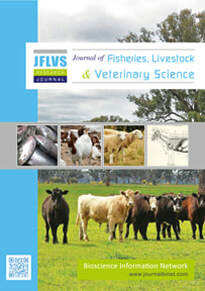
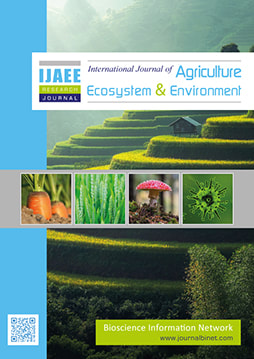
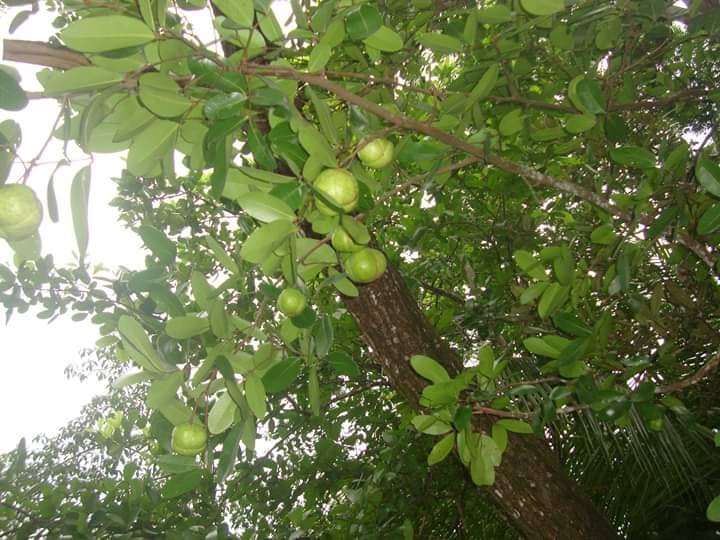
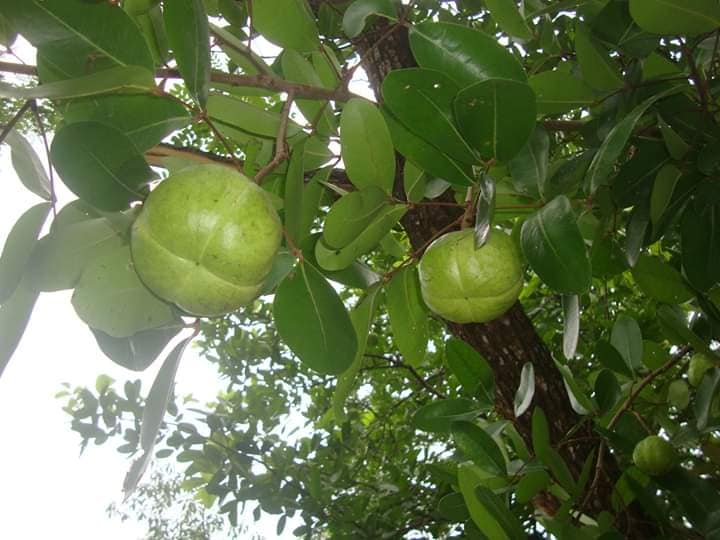

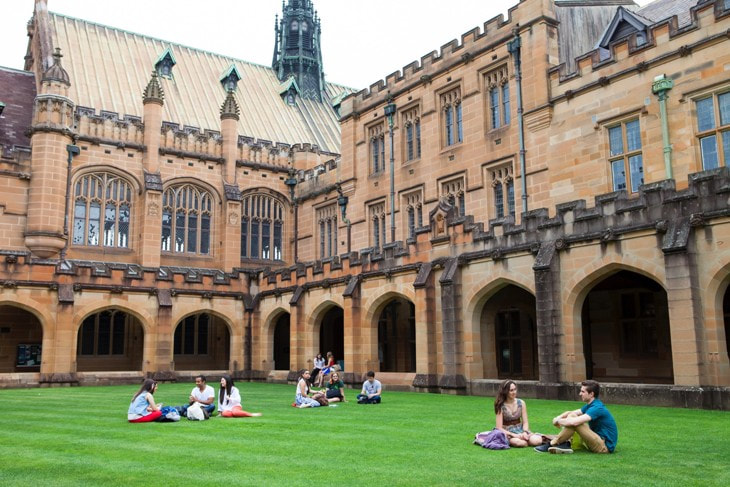
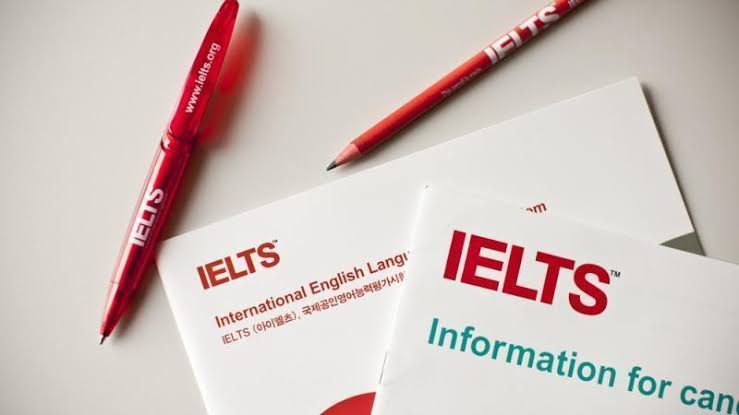

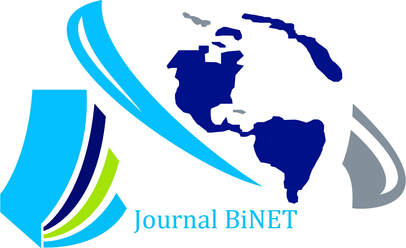
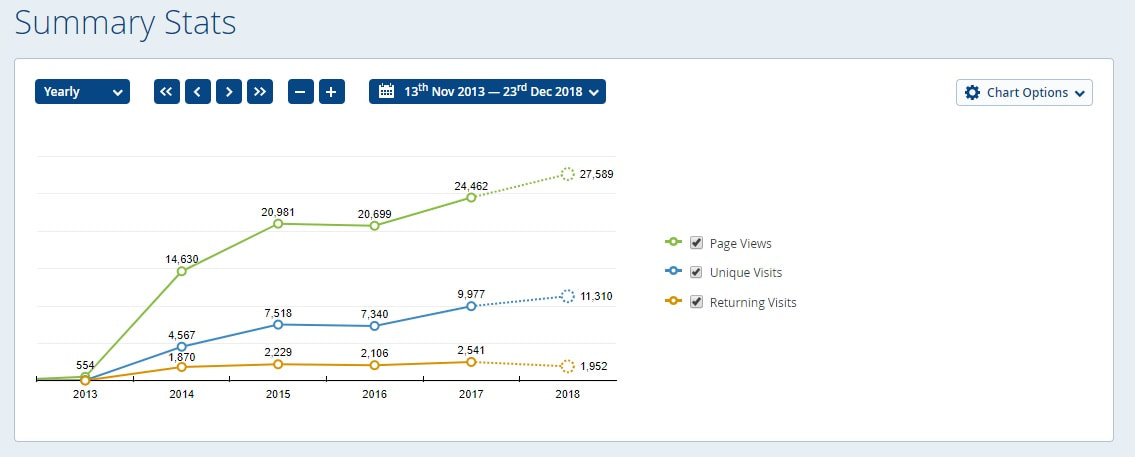
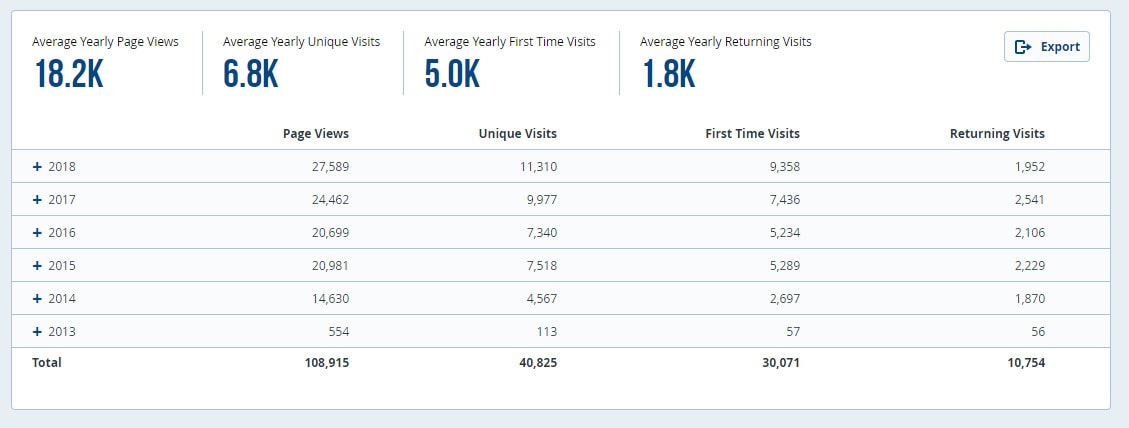

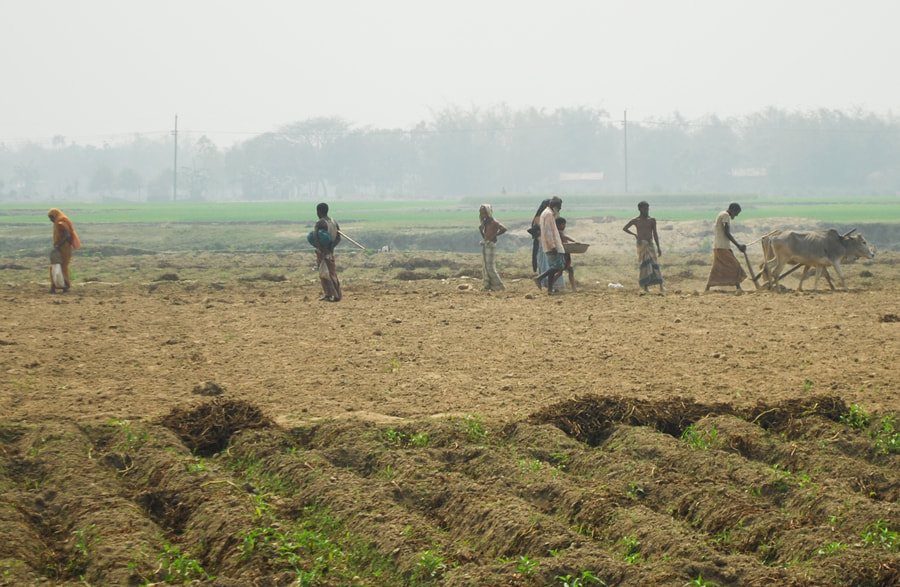
 RSS Feed
RSS Feed